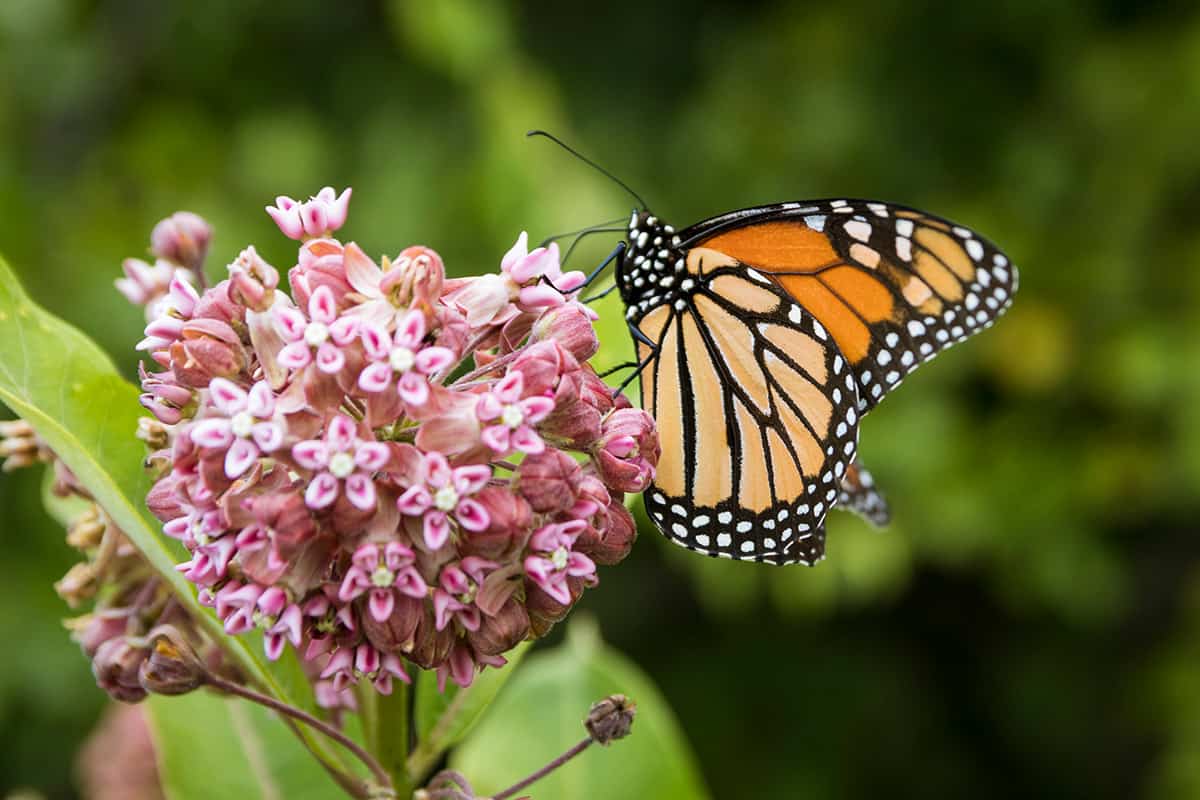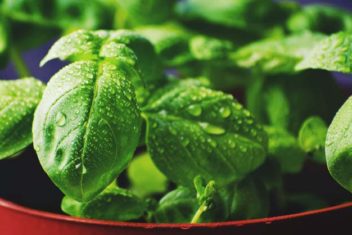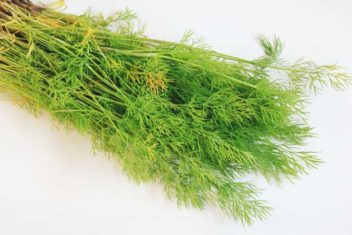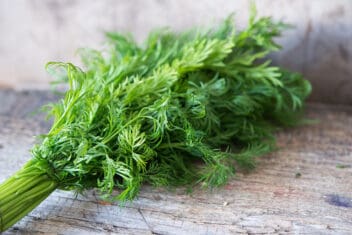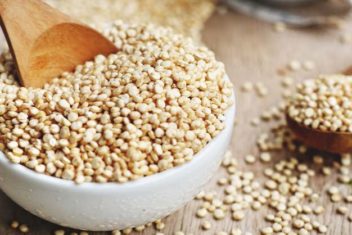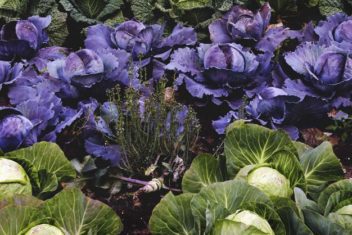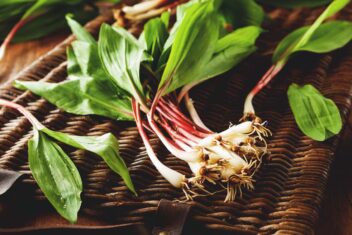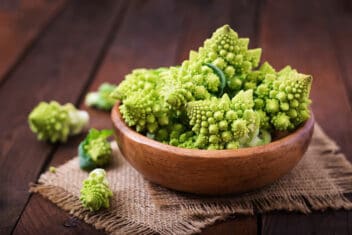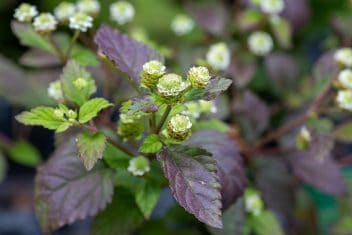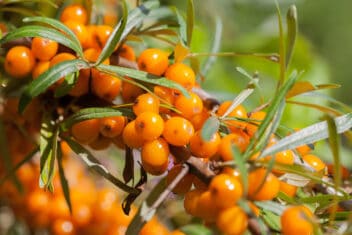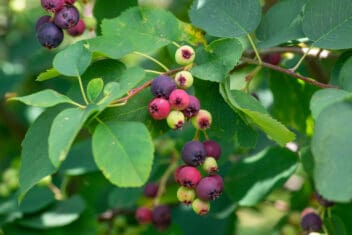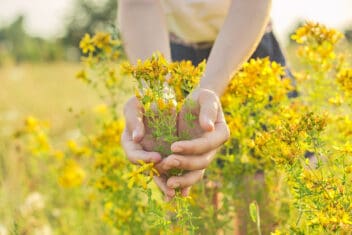Common milkweed arguably isn’t the prettiest plant. It’s tall and gangly, with modest blooms and huge seed pods that dominate the plant in early autumn. Most people aren’t growing milkweed for its ornamental value. That’s okay, it’s absolutely indispensable in the garden, anyway.
Milkweed is a humble plant whose role in the ecosystem is absolutely essential. Milkweed is the only plant the monarch caterpillars feed on. Without milkweed leaves, the monarchs can’t survive. Lots of other animals rely on it, too.
Ready to get started? Let’s welcome a few of the wild, weedy plants into our gardens this year – starting with milkweed.
What is Milkweed?
Common milkweed (Asclepias syriaca) is a 2-4 foot tall, perennial herb that grows wild in gravely, rocky soil. Milkweed leaves are long and thick – full of nutrients to support a growing caterpillar. The flowers, that bloom in late spring through midsummer are small, violet, and fragrant. After flowering, milkweed produces huge pods full of cottony seeds.
For centuries, milkweed – along with poppies, cornflowers, and goldenrod – fed a plethora of pollinators as they grew between the rows of corn and wheat in farm fields across the country. But when strong herbicides became common in the late 20th century, these field weeds faded from the landscape. The bees and butterflies they left behind suffered as well, but none more than the beautiful monarchs.
In addition to monarchs, animals like deer and rabbits eat milkweed. Dozens of species of butterflies and bees also feed on milkweed. It’s an important plant for the ecosystem.
Fortunately, small-scale gardeners are introducing milkweed to the home garden. In suburbs, small towns, and rural homesteads, milkweed is making a comeback. But if you think you can just throw a few seeds on the ground in spring and end up with a healthy patch of milkweed in the summer get ready for disappointment.
Milkweed may grow like a weed, but that doesn’t mean it grows easily without any help at all.
Milkweed Varieties
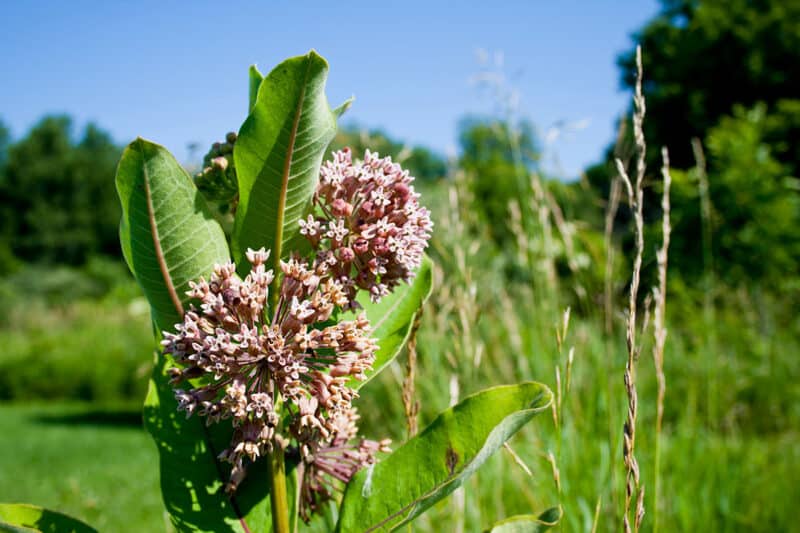
If you’re hoping to support the butterfly population in your area, pick a milkweed that belongs in your local ecosystem. While common milkweed fits into most climates well, it’s not your only option.
Swamp milkweed (Asclepias incarnata) grows well in the south, and Arizona milkweed (Asclepias angustifolia) is a great option for the west and southwest.
Like common milkweed, swamp and Arizona milkweed are hardy plants that grow easily in their native climates. All three varieties are also safe and nurturing for your local monarch caterpillars.
Growing milkweed is similar no matter what variety you’re growing. I’ll be focusing on common milkweed though. Since it is easily grown in zones 3-9, common milkweed is the most ubiquitous of the varieties.
Planting Milkweed from Seed
Have you heard horror stories of milkweed seeds that failed to germinate? Like many perennial herbs, Asclepias syriaca is considered a challenge to start from seed. Fortunately, once you’ve established your milkweed plants, they spread easily through rhizomes.
The back of your seed packet may call for “cold stratification.” If you’re planting in the spring – or in zones 7-9 – cold stratifying your seeds means that you should wrap them in cool, damp paper towels and stick them in the refrigerator. Cold stratify your seeds for about 6 weeks before planting.
But if you can pick your planting season – and you live in an area where winter temperatures drop below 40 degrees – choose autumn! Planting milkweed seeds in late fall lets mother nature do all the work. Winter will cold stratify your seeds better than the refrigerator will, so skip all the work and plant milkweed about a month or two before winter hits.
Pick the Right Location
Milkweed doesn’t need rich soil to grow well. Pick a sunny spot and loosen the soil. Milkweed is a full sun-loving plant. It grows best in loose, well-tilled soil – which is why it grew so well in the cornfields of old.
The quality of soil isn’t a concern. Milkweed grows just as happily in clay, sandy soil, or soft loam. But your soil should be wet. Really soak the ground before planting your milkweed seeds. The earth should look and feel saturated. Don’t worry about mulching or adding fertilizer, milkweed doesn’t need either to thrive.
Plant milkweed seeds about an inch deep in the drenched earth. You can space the seeds about a half-foot to 9 inches apart. If all the seeds germinate, you’ll have to thin the young plants to about 18 inches apart. With proper cold stratification, milkweed seeds have a relatively high germination rate.
Be sure to mark the location of your milkweed seeds, especially if you’re planting in the fall. It’s easy to forget where you’ve put things over the winter. If you live in an area with lots of snow – make sure the labels will stick through the winter. We like to tie little scraps of fabric to saplings as wintertime plant markers because even sharpies don’t stay legible through 4-5 months under the snow.
Sprouting
The milkweed seeds will sprout when the snow is gone and the ground is warm and workable again. They will probably need some thinning in the spring, but give them a month or two of growth before spacing them out.
Established milkweed plants tend to spread by rhizomes, so a little extra space between seedlings just guarantees your plants more room to spread when they’re ready. Most young milkweed plants will need about a foot of space between them to allow for healthy growth.
They can grow anywhere from 2 to 6 feet in height, so don’t crowd them. But if you’re growing milkweed to support monarchs, try to keep your plants within easy crawling distance for hungry caterpillars. About 16-24 inches between young milkweed plants is ideal.
Caring for Milkweed Plants
Once your milkweed seedlings have successfully sprouted and grown you can leave them in peace. Milkweed is a weed in the truest sense – it loves being neglected. Unless your garden is suffering from a severe drought, don’t bother the milkweed.
In a dry spell, milkweed appreciates occasional watering; otherwise, this hardy plant is ready to stand on its own roots.
Pests and Problems
While two and four-legged predators are rarely a problem, aphids and slugs can occasionally wreak havoc on your milkweed plants. In a damp, humid summer, set beer traps for the slugs, or just wander the garden with a saltshaker to dispose of the little pests.
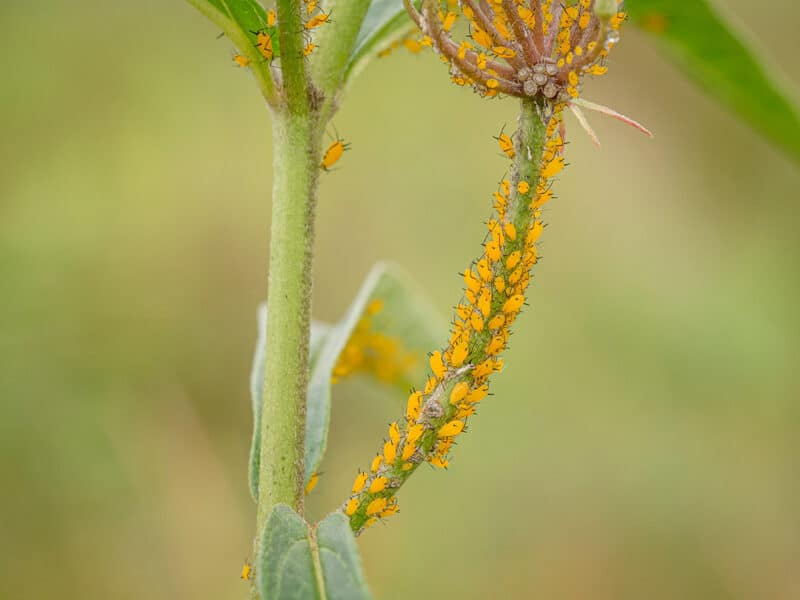
If aphids are attacking your milkweed plants, you can kill them with insecticidal soap. Check carefully for monarch eggs before spraying though, because insecticidal soap will kill your monarch along with the aphids!
Monarch eggs are white. There is rarely more than one egg per leaf, and the butterflies lay them on the underside of milkweed leaves. Milkweed aphids are yellowish creatures, they live in clusters on both the tops and bottoms of leaves. If there are any monarch eggs on a milkweed plant, wait. Don’t treat the plant for aphids until all the monarchs have moved away.
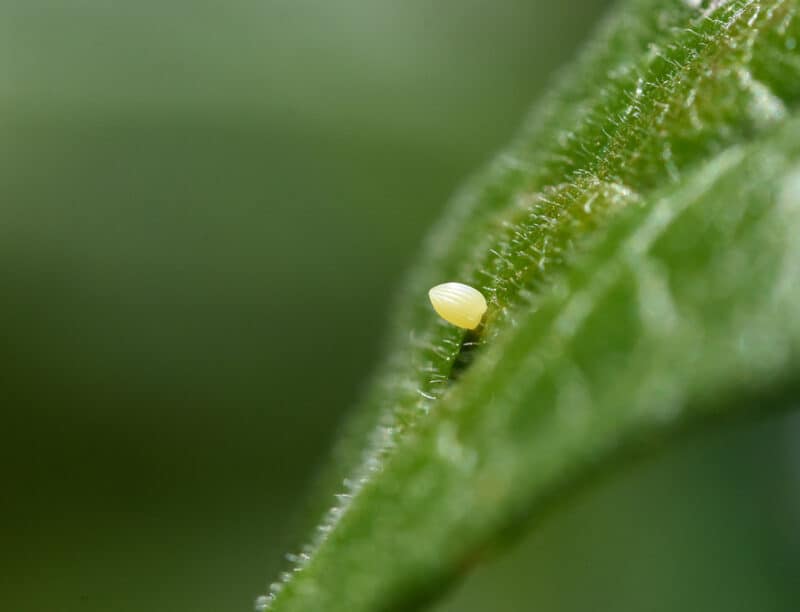
Harvest Season
A hundred years ago, nobody bothered to plant milkweed. It just sprung up in fields and roadsides. But the world is a little less welcoming to wild things now, so milkweed needs help spreading. If you want to seed in more milkweed plants instead of waiting for them to spread on their own, collect the seed pods.
Milkweed seed pods form in the late summer or early fall. When the seeds are ripe and viable, the pods will burst – sending the cottony seeds into the air. Of course, if you’re trying to collect seeds, this scattering is less than helpful.
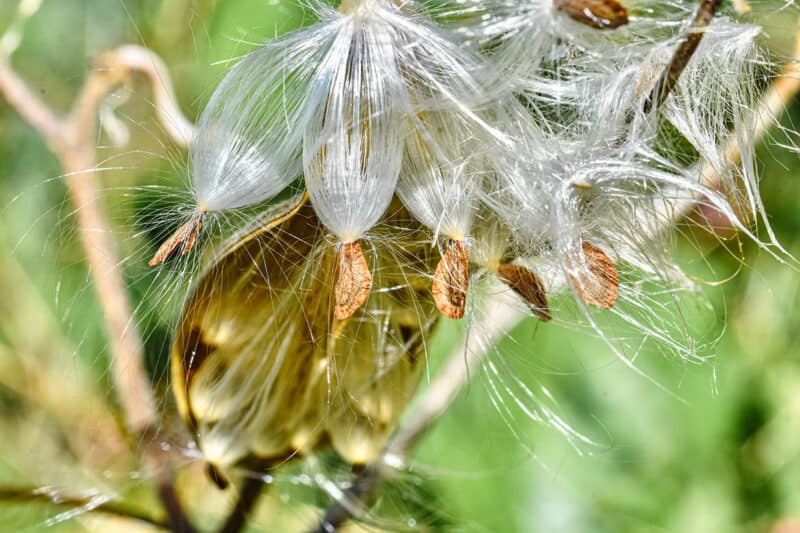
Harvesting the pods early is not an option though, because the seeds in unripe pods never grow to viability. So, what’s a gardener to do?
Rubber Band
I’ve found that securing a rubber band gently around the new formed pods is a fantastic way to hold the seeds inside while they ripen.
So many of my friends and family creating butterfly sanctuaries in their gardens, and they all want milkweed seeds. When the pods form on our sprawling bed of milkweed plants, I rubber band a few pods to save for gifting. Once the pods are secure, all you have to do is wait. After a while, the pod will start to split along the edges. When it splits, your pod is ready to harvest.
The rubber band holds it together until you’ve got it inside and out of the wind. I like to put the pods in a paper bag, remove the rubber bands, and then shake out the seeds. Everything stays together this way, and you avoid making a fuzzy mess in the house.
Remember to let at least a few seed pods scatter freely. We want to make sure there are still wild milkweed plants as well as intentional plants.
